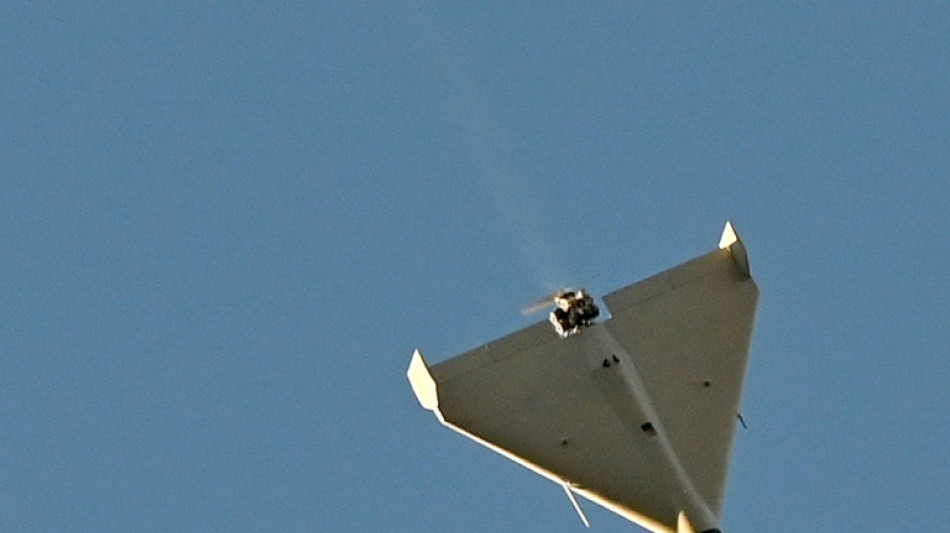
-
 North Korea denies removing border loudspeakers
North Korea denies removing border loudspeakers
-
Despite risks, residents fight to protect Russian national park

-
 Asian markets mixed as bitcoin surges to new high
Asian markets mixed as bitcoin surges to new high
-
War-weary Ukrainians find solace by frontline lake

-
 Okinawa a reluctant host for US troops 80 years after WWII
Okinawa a reluctant host for US troops 80 years after WWII
-
Alonso's Real Madrid start La Liga with fresh energy

-
 Liverpool splash out to secure status as Premier League's top dogs
Liverpool splash out to secure status as Premier League's top dogs
-
Hong Kong court postpones closing arguments in Jimmy Lai trial

-
 Top Japanese fighter retires to support comatose boxer brother
Top Japanese fighter retires to support comatose boxer brother
-
Boars, Butterflies or Bees? Public to name Papua New Guinea's NRL team

-
 Defending champions Sinner, Sabalenka reach Cincinnati quarters
Defending champions Sinner, Sabalenka reach Cincinnati quarters
-
Bolivia presidential hopefuls make last push for votes

-
 Trump orders space regulations eased in win for Musk
Trump orders space regulations eased in win for Musk
-
Trump warns of make-or-break chance with Putin as pressure mounts
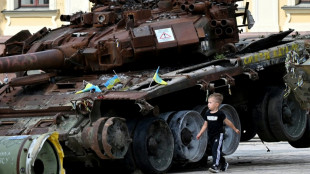
-
 From Snoop Dogg to Tom Brady, stars flock to English second-tier clubs
From Snoop Dogg to Tom Brady, stars flock to English second-tier clubs
-
Inside Trump's 'Alligator Alcatraz': detainees allege abuse in a legal black hole

-
 Scientists find surprising sex reversal in Australian birds
Scientists find surprising sex reversal in Australian birds
-
Taylor Swift sets October release for new album

-
 Sinner, Sabalenka sail into Cincinnati quarter-finals
Sinner, Sabalenka sail into Cincinnati quarter-finals
-
Oh carp: UK's Lammy on the hook after fishing with Vance without licence
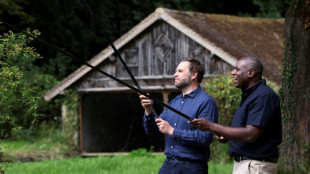
-
 Sinner shrugs off rain to dispatch Mannarino in Cincinnati
Sinner shrugs off rain to dispatch Mannarino in Cincinnati
-
Tainted fentanyl blamed for 87 hospital deaths in Argentina

-
 Eyeing robotaxis, Tesla hiring New York test car operator
Eyeing robotaxis, Tesla hiring New York test car operator
-
NBA approves $6.1bn sale of Boston Celtics

-
 PSG beat Tottenham on penalties to win UEFA Super Cup after late comeback
PSG beat Tottenham on penalties to win UEFA Super Cup after late comeback
-
Cowboys owner Jones says experimental drug saved him after cancer diagnosis

-
 Striking Boeing defense workers turn to US Congress
Striking Boeing defense workers turn to US Congress
-
PSG beat Tottenham on penalties to win UEFA Super Cup

-
 Hong Kong court to hear closing arguments in mogul Jimmy Lai's trial
Hong Kong court to hear closing arguments in mogul Jimmy Lai's trial
-
US singer Billy Joel to sell off motorcycles due to health condition

-
 Barcelona's Ter Stegen validated as long-term injury by La Liga
Barcelona's Ter Stegen validated as long-term injury by La Liga
-
Storm makes landfall in China after raking Taiwan as typhoon

-
 Colombia buries assassinated presidential candidate
Colombia buries assassinated presidential candidate
-
Zverev finishes overnight job at Cincinnati Open

-
 Bukele critics face long exile from El Salvador homeland
Bukele critics face long exile from El Salvador homeland
-
McIlroy 'shot down' suggestion of Ryder Cup playing captain role

-
 'Water lettuce' chokes tourism, fishing at El Salvador lake
'Water lettuce' chokes tourism, fishing at El Salvador lake
-
Peru's president signs military crimes amnesty bill into law

-
 At least 26 migrants dead in two shipwrecks off Italy
At least 26 migrants dead in two shipwrecks off Italy
-
Root says Warner jibe 'all part of the fun' heading into Ashes

-
 Plastic pollution treaty talks in disarray
Plastic pollution treaty talks in disarray
-
Trump eyes three-way meeting with Putin, Zelensky
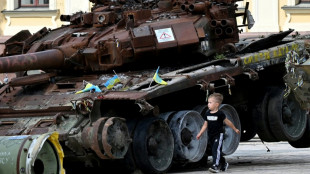
-
 'Viable' chance for Ukraine ceasefire thanks to Trump: UK PM
'Viable' chance for Ukraine ceasefire thanks to Trump: UK PM
-
Vance visits US troops during UK trip

-
 Premier League has no say on delay over Man City charges, says chief exec
Premier League has no say on delay over Man City charges, says chief exec
-
Trump names Stallone, Strait among Kennedy Center honorees

-
 Israeli military says approved plan for new Gaza offensive
Israeli military says approved plan for new Gaza offensive
-
Europeans urge Trump to push for Ukraine ceasefire in Putin summit
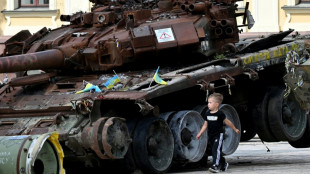
-
 Stocks extend gains on US rate-cut bets
Stocks extend gains on US rate-cut bets
-
Venus Williams receives wild card for US Open singles


Russia's use of Iranian drones shows up domestic weakness
The use by Russia of Iranian drones in its war against Ukraine makes clear the weaknesses of its domestic industry and Tehran's growing claim on the market for unmanned aircraft, experts say.
Washington believes Iran has delivered hundreds of drones, which Ukrainian officials say are now being used in strikes like those launched against cities and energy infrastructure on Monday.
- What drones has Iran delivered? -
So far two models of Iranian drone have been identified in Ukraine's skies, built for two different purposes.
One of them, the Shahed 136, is a relatively low-cost "kamikaze drone" that can be programmed to fly automatically to a set of GPS coordinates with a payload of explosives.
"It flies quite low, striking a target that must be stationary at a range of a few hundred kilometres," said Pierre Grasser, a researcher tied to Paris' Sorbonne University.
One was photographed by an AFP journalist plunging into Kyiv early Monday.
The second type, the Mohajer-6, is "similar in size and functionality to the Bayraktar TB-2 drone from Turkey," said Vikram Mittal, a professor at the US military academy in West Point.
The Turkish model's missile strikes on Russian armour made the Bayraktar a symbol of successful Ukrainian resistance to invasion early in the war, with a propaganda song composed about them widely shared online.
Both drones belong to a type broadly referred to as MALE (Medium Altitude, Long Endurance) unmanned aircraft, like the US-made Predator used in Iraq, Afghanistan and elsewhere.
The TB-2 was also used by Azerbaijan in its 2020 war with neighbouring Armenia to retake part of the Azerbaijani region of Nagorno-Karabakh from Armenian control.
- Are Iranian drones effective? -
"Just like any armed drone or loitering munition, they're very effective when the enemy has no way of protecting themselves or fighting back," said Jean-Christope Noel, a researcher at the French Institute for International Relations.
Mittal said much of their initial success comes "from being a new weapon on the battlefield."
"The Ukrainians will eventually shoot down or capture one of the drones, dissect it, and develop counter-drone systems," he added, although that "could take months".
For now, Kyiv's forces could use shoulder-launched anti-aircraft missiles to attack the drones in daylight, or radar-equipped versions at night.
They could also attempt to use complex GPS jamming techniques to turn the Shahed 136 off course, as they have no backup system to reach their target without satellite guidance.
Such kamikaze drones are "a money-saving move for Russia, because it saves valuable cruise missiles worth $1.5 million to $2.0 million" per shot, Grasser said.
But "their main shortcoming is they can only hit stationary targets," he added.
"They don't pose any threat to troops in the field. The arrival of these drones therefore shouldn't change the course of the fighting."
- Is Russia's industry failing? -
Russia is one of the world's largest arms producers, but has still found itself forced to turn to Iran in this case.
"The defence ministry has worked out tactical and technical requirements for drones. And unfortunately most (Russian) manufacturers can't meet them," Russian colonel Igor Ischchuk recently told the country's TASS news agency.
Although no Russian manufacturer offers long-range kamikaze drones like the Shahed 136, "they are supposed to have equipment along the lines" of the TB-2 or Mohajer MALE drones, Grasser said.
"The fact they're taking Iranian drones is an admission of industrial failure... it shows (Russian industry) can't keep up the pace," he added.
Western sanctions over the invasion of Ukraine have hit a Russian industry already sapped by supply chain disruption during the Covid-19 pandemic.
Russia "no longer has access to Western technological components, and their attempts to mass-produce these types of devices have been fruitless," Noel said.
- Iranian-Turkish rivalry? -
As drones become more fundamental to fighting wars, "there is likely somewhat of a mid-tier, cheap drone arms-race between the Iranians and Turks to try to gain control of the market and expand their country's sphere of influence," Mittal said.
While the US and Israel host the world's top-of-the-line manufacturers, "the Turkish drones are a step down, but they are more reliable than the Iranian drones, which don't seem very precise," French drone expert Marianne Renaux said.
Tehran can already count on some buyers for its product in the Middle East in Yemen, Lebanon or Iraq, Noel said.
"But American sanctions against any customers make for a hard limit on the number of candidates who might like to arm themselves with this gear," he added.
W.AbuLaban--SF-PST




